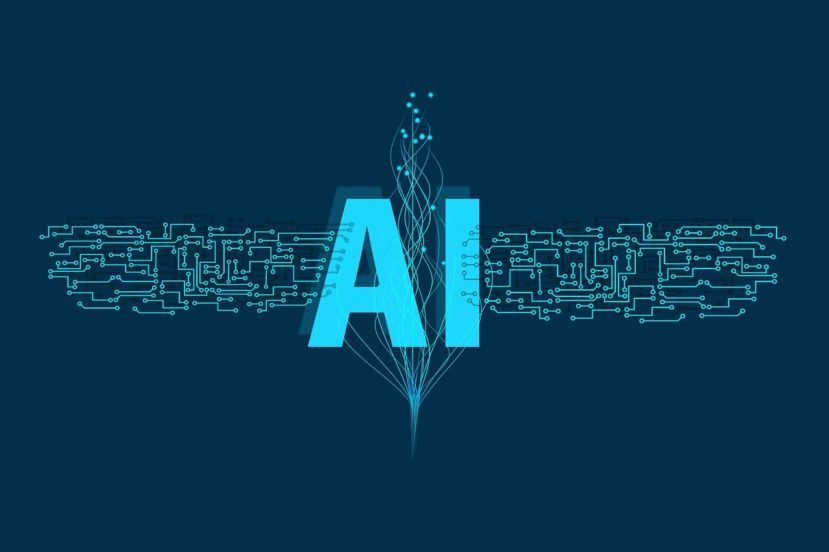On February 14, 2022, the Copyright Review Board denied registration for a two-dimensional artwork entitled “A Recent Entrance to Paradise.” What was notable about this artwork was that it was created by artificial intelligence (“AI”). The copyright application was filed by Stephen Thaler, an AI researcher best known for his legal campaigns to seek protection for AI-created works.
Copyright Act Requires Human Intervention
Section 102 of the Copyright Act affords protection to “original works of authorship” that are fixed in a tangible medium of expression. Although the definition of who can be an author is not precisely defined in the Copyright Act, the U.S. Copyright Office Compendium (Third) §§ 306 and 313.2 make clear that “a work must be created by a human being.” The Copyright Office will not register works “produced by a machine or mere mechanical process” that “operates without any creative input or intervention from a human author.” See Id. The Board does not provide a standard for what level of human intervention would meet this standard; however, what is clear is that Thaler “provided no evidence on sufficient creative input or intervention by a human author in the [w]ork.”
AI Researcher’s Arguments
In November 2018, Thaler filed an application to register a copyright claim in the artwork, “A Recent Entrance to Paradise.” In that application, Thaler listed the “Creative Machine” as the author and listed himself as the owner of the Creative Machine. He noted that the artwork “was autonomously created by a computer algorithm running on a machine.” In 2019, a letter from a Copyright Office registration specialist refused to register the work because it lacked human authorship, which is necessary to support a copyright claim.
Subsequently, Thaler requested the Office reconsider its initial refusal, arguing that the human authorship requirement is unconstitutional and unsupported by statute or case law. After reviewing the work and the points raised in the first request, the Office again concluded that human authorship is necessary to sustain a claim in copyright and that Thaler failed to provide evidence of sufficient creative input by a human author in the artwork.
Thaler made a second request for reconsideration. He reasserted his previous argument that the Office’s human authorship requirement is unconstitutional and unsupported. He also argued public policy concerns, suggesting the Office should register copyrights in machine-generated works because doing so would “further the underlying goals of copyright law, including the constitutional rationale for copyright protection.” Thaler further alleged, incorrectly and unconvincingly, that there is no binding authority prohibiting copyright for computer-generated works; that copyright law allows non-human entities to be authors under the work-for-hire doctrine; and that the Office is relying on non-binding judicial opinions “from the Gilded Age” to answer questions on whether computer-generated works may be protected.
The Review Board’s Decision
The Copyright Review Board denied Thaler’s registration for his AI generated work. The Board accepted as true that the work was created by AI without any creative input from a human author. It noted the requirements in the Compendium (Third) that human authorship is a prerequisite to copyright registration and protection in the U.S., and that since Thaler has provided no such evidence the Office will not depart from a century of copyright jurisprudence. Beginning in 1884, the Supreme Court noted that human authorship is an essential element of copyright protection. See e.g. Burrows-Giles Lithographic Co. v. Sarony, 111 U.S. 53 (1884). In recent years, the Ninth Circuit has rejected the idea that a monkey could register a copyright in a photograph (selfie) it captured with a camera (see Naruto v. Slater, 888 F.3d 418 (9th Cir. 2018)), or that there could exist copyright protection in a living garden since “a garden owes most of its form and appearance to natural forces.” See Satava v. Lowry, 323 F.3d 805 (9th Cir. 2003). The Board also notes in its decision that the USPTO will not recognize patent protection for an invention solely created by AI.
Thaler’s secondary argument supporting work for hire is also misplaced. Although companies can be authors of works, there exists an important distinction under the work for hire doctrine, in that humans are entering into a legal binding contract. Even where a company is an author, an officer of the company represents that company in all its legal dealings and signs its contracts. Thaler’s Creativity Machine cannot enter into any such agreements. Also, the work-for-hire doctrine speaks only to who owns a work, not whether a work is protected by copyright. This is where Thaler’s arguments are misguided.
Impact of the Decision
Nearly 45 years ago in 1978, the National Commission on New Technological Uses of Copyrighted Works (“CONTU”) was created to study “the creation of new works by the application or intervention [] automatic systems of machine reproduction.” After conducting its review, CONTU concluded that there must be the “presence of at least minimal human creative effort at the time the work is produced.” Is it time to recommission the study and/or reconsider the findings of CONTU 45 years later?
Because Thaler did not submit any evidence of human interaction, the Review Board did not address what kind of human interaction between Thaler and the AI would suffice. Some human created the program that created this piece of artwork? Isn’t that enough to meet the current threshold of human interaction under the Copyright Act? If the Creative Machine entered into some agreements that Thaler signed as its representative, would that suffice? Is the Creative Machine Thaler’s employee? Is there a work for hire claim here (note that, at least for this Review Board, that is a separate issue from registrability).
AI is here to stay and will only grow smarter and, possibly, become self-aware. The fact remains that the Copyright Act is outdated on many fronts. It has not been updated in 45 years. At some point the U.S. Congress will need to address these issues and more if the courts continue to take a very traditional view of “original work of authorship.”
If you have questions or need help with your copyright application, please contact us for assistance.

Stacey C. Kalamaras is the founding partner of Kalamaras Law Office, LLC. She has extensive intellectual property experience with a particular focus on trademark prosecution and enforcement. She has protected some the world’s largest brands in more than 150 countries and specializes in helping small and medium sized businesses grow and protect their brands. Contact her at info@klolegal.com.
Stacey is also the founder and lead instructor of Trademarkabilities®, an online trademark academy for lawyers, whose mission it is to prepare lawyers to be confident and effective practitioners before the USPTO. To learn more, please visit https://www.trademarkabilities.com/.

